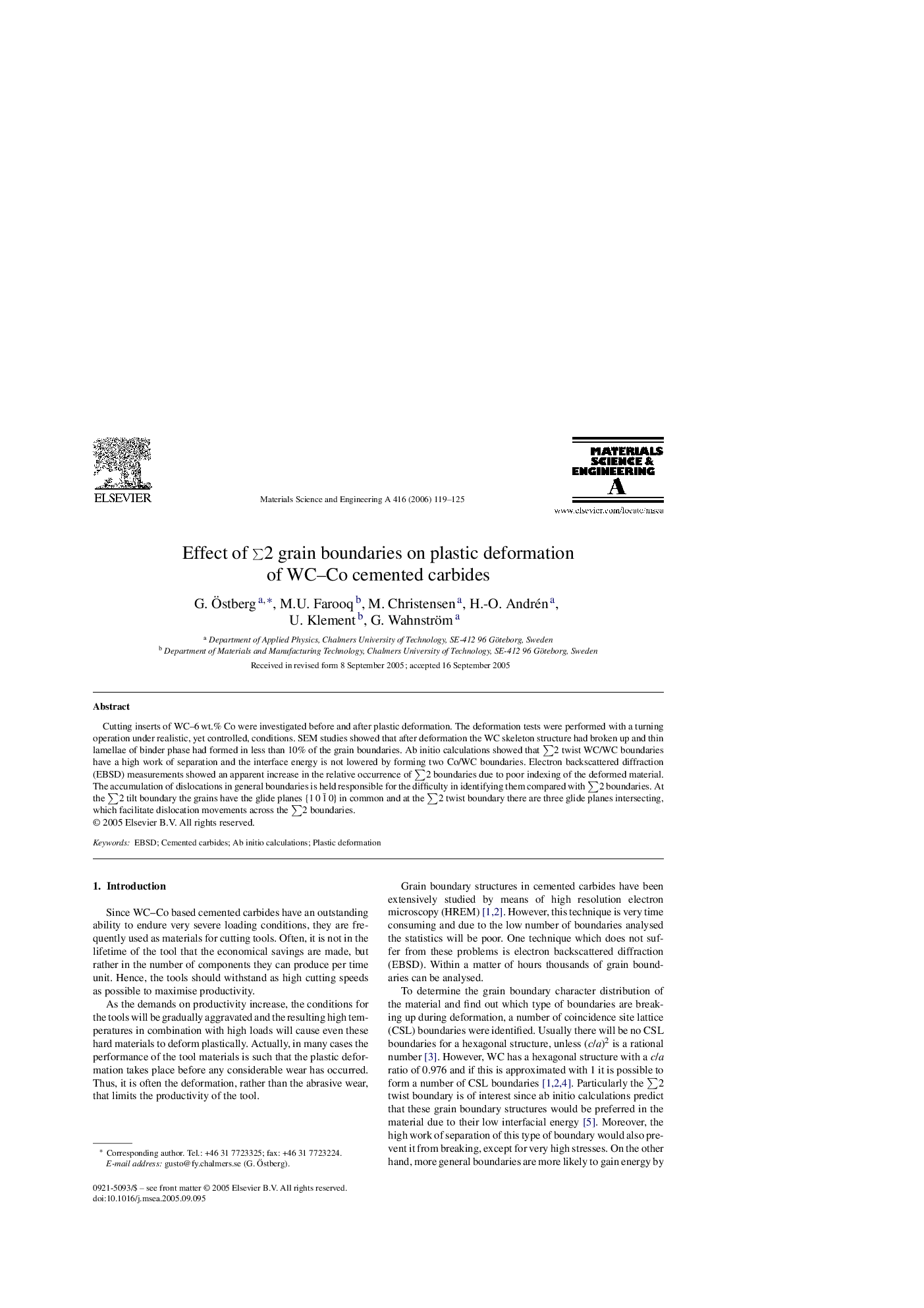| Article ID | Journal | Published Year | Pages | File Type |
|---|---|---|---|---|
| 1586073 | Materials Science and Engineering: A | 2006 | 7 Pages |
Cutting inserts of WC–6 wt.% Co were investigated before and after plastic deformation. The deformation tests were performed with a turning operation under realistic, yet controlled, conditions. SEM studies showed that after deformation the WC skeleton structure had broken up and thin lamellae of binder phase had formed in less than 10% of the grain boundaries. Ab initio calculations showed that ∑2 twist WC/WC boundaries have a high work of separation and the interface energy is not lowered by forming two Co/WC boundaries. Electron backscattered diffraction (EBSD) measurements showed an apparent increase in the relative occurrence of ∑2 boundaries due to poor indexing of the deformed material. The accumulation of dislocations in general boundaries is held responsible for the difficulty in identifying them compared with ∑2 boundaries. At the ∑2 tilt boundary the grains have the glide planes {1 0 1¯ 0} in common and at the ∑2 twist boundary there are three glide planes intersecting, which facilitate dislocation movements across the ∑2 boundaries.
